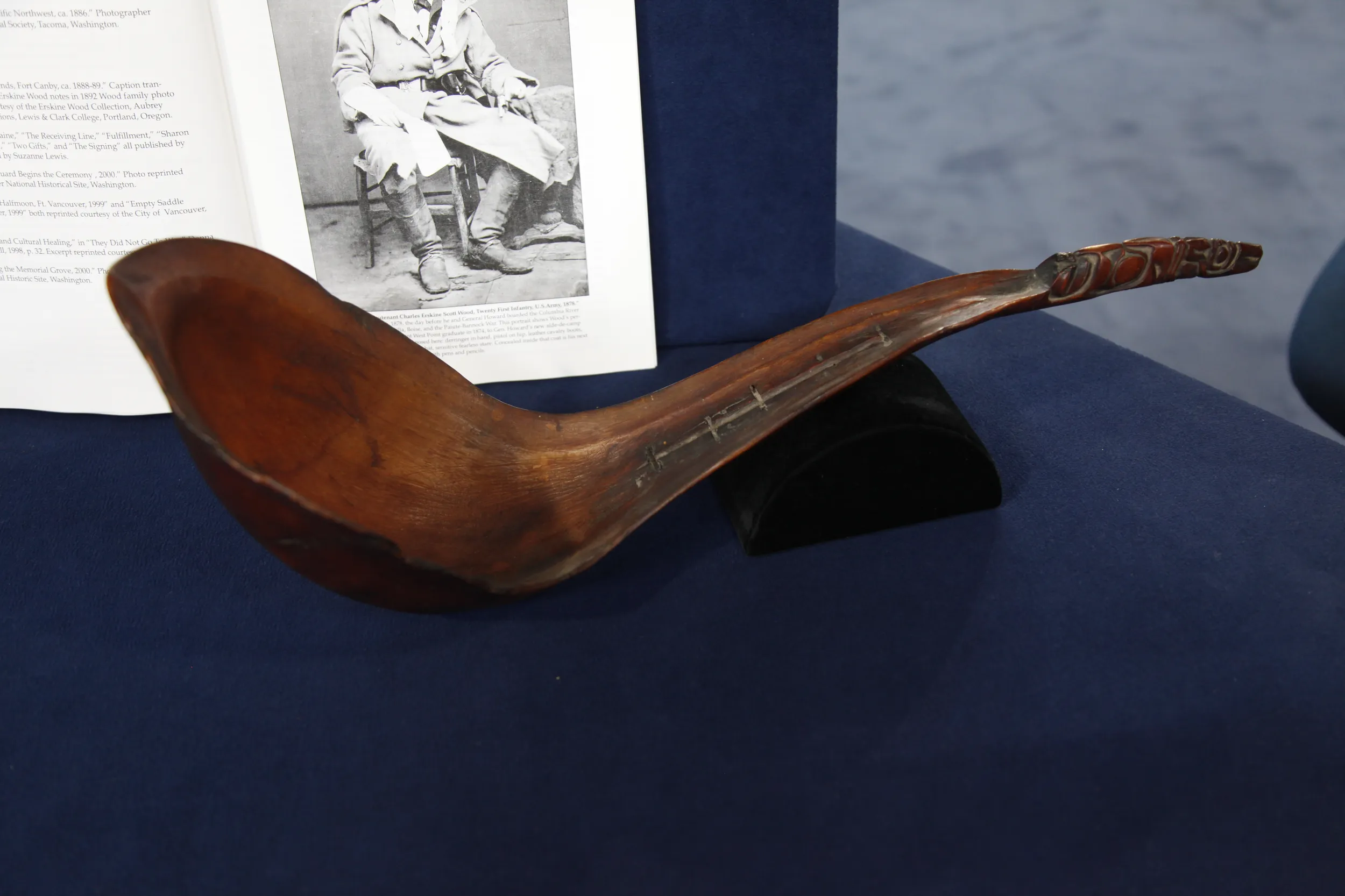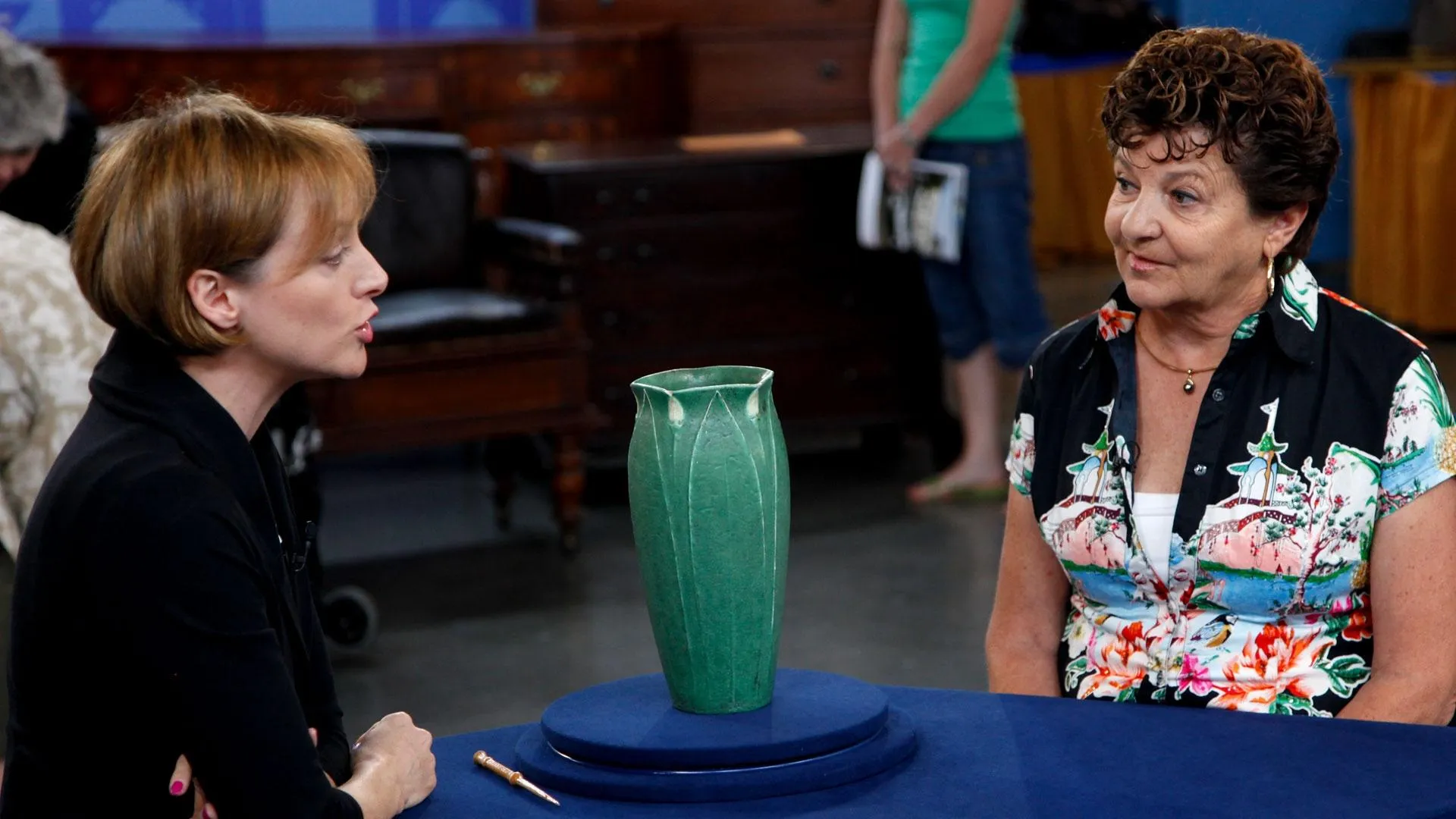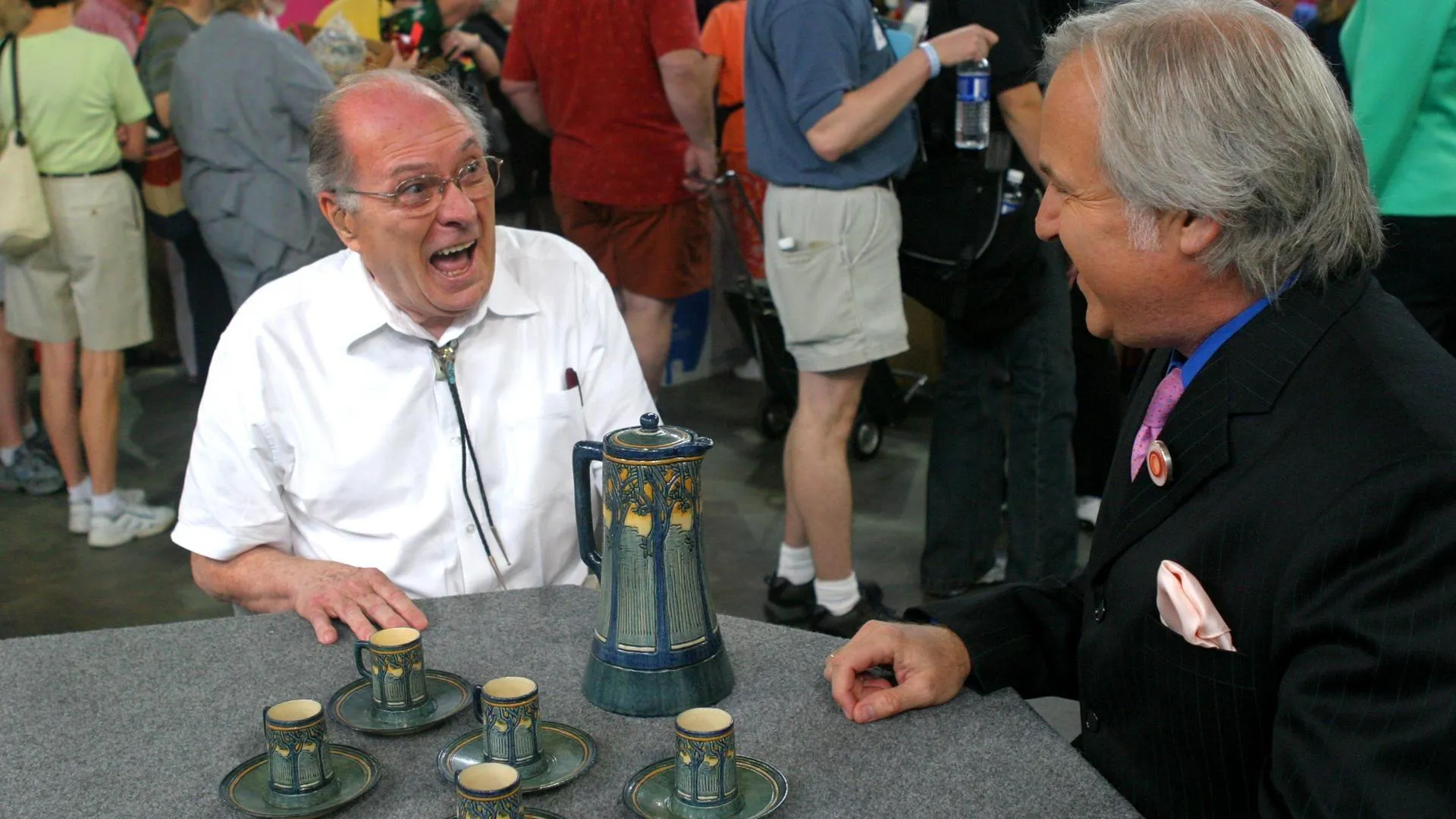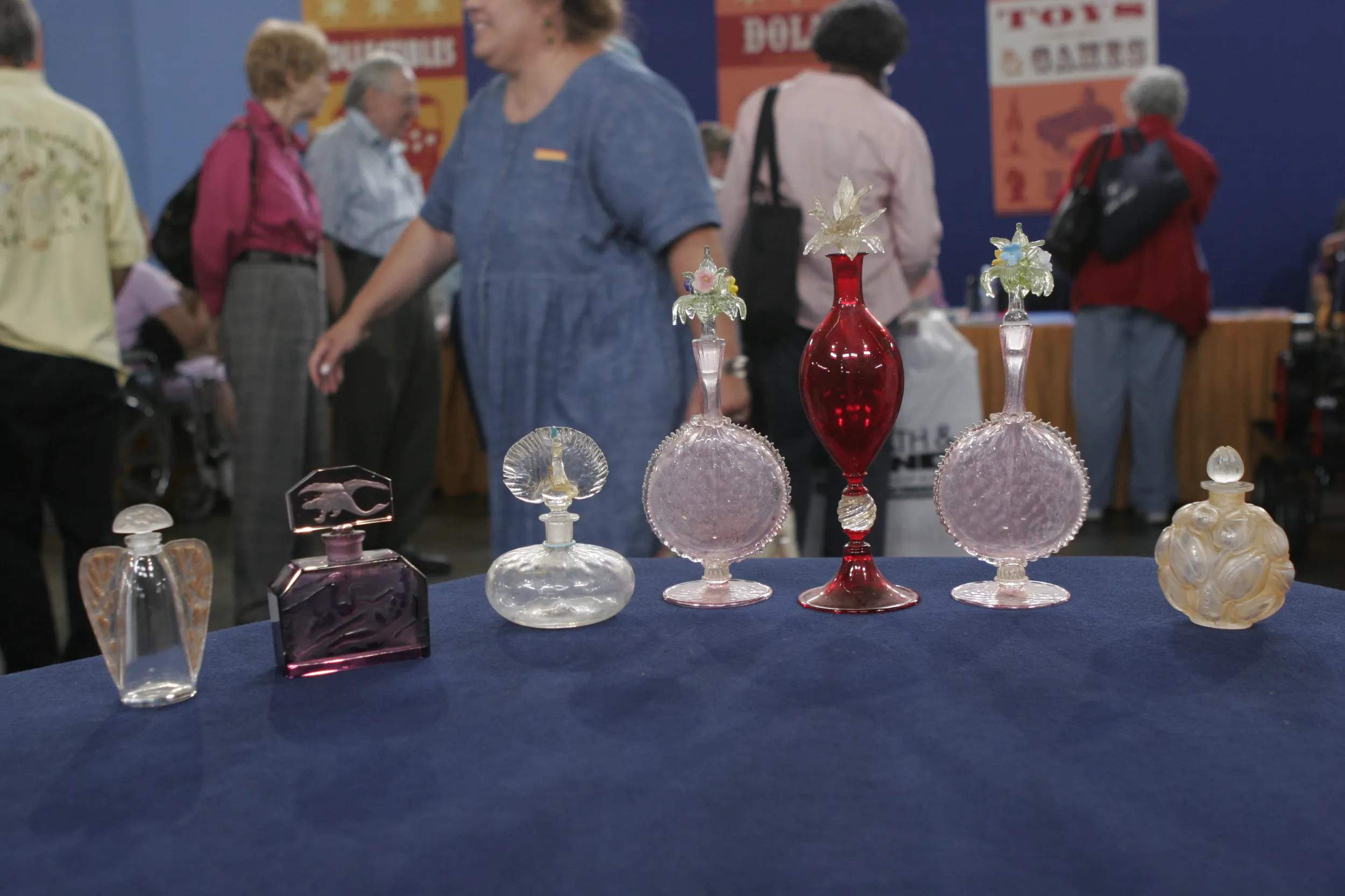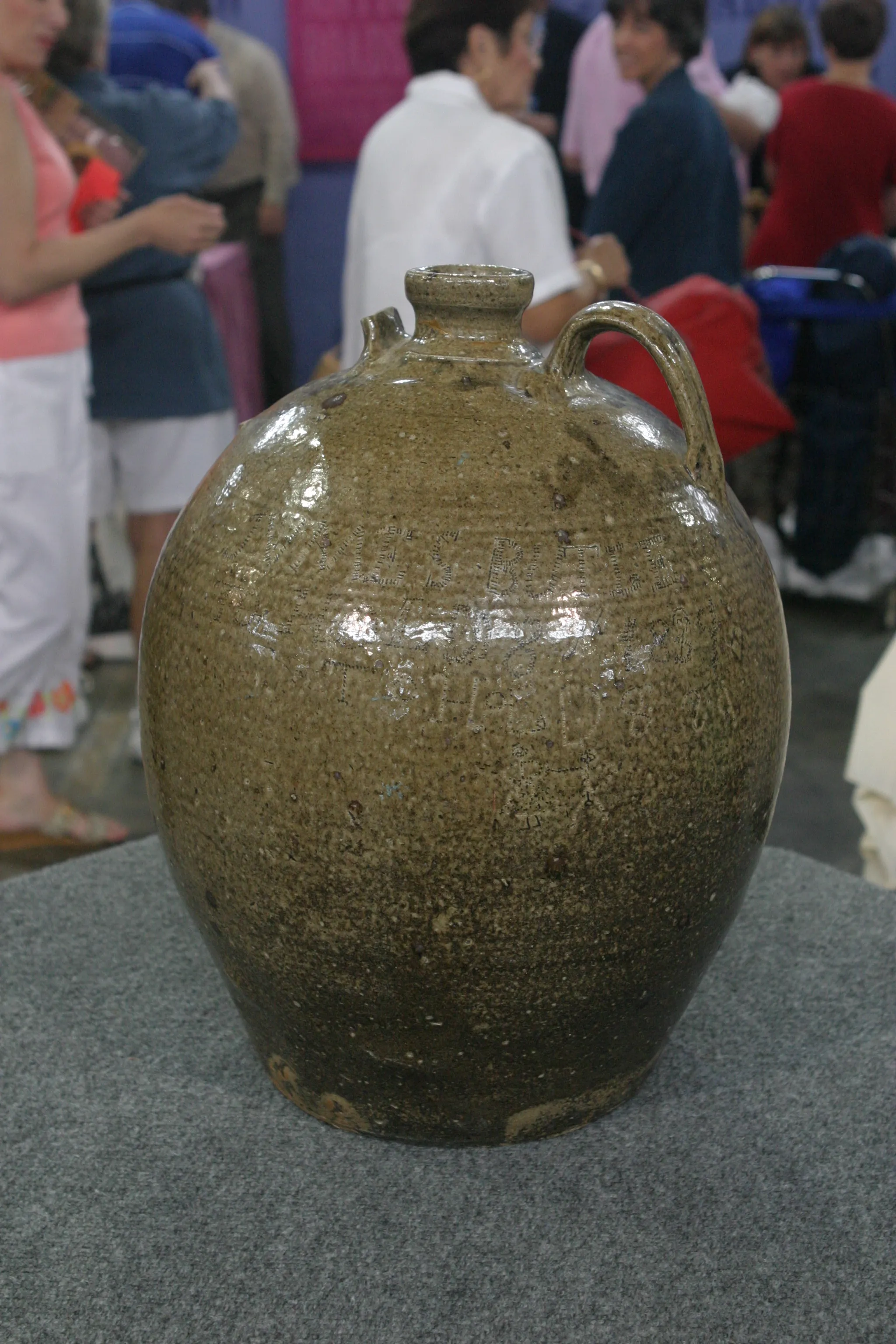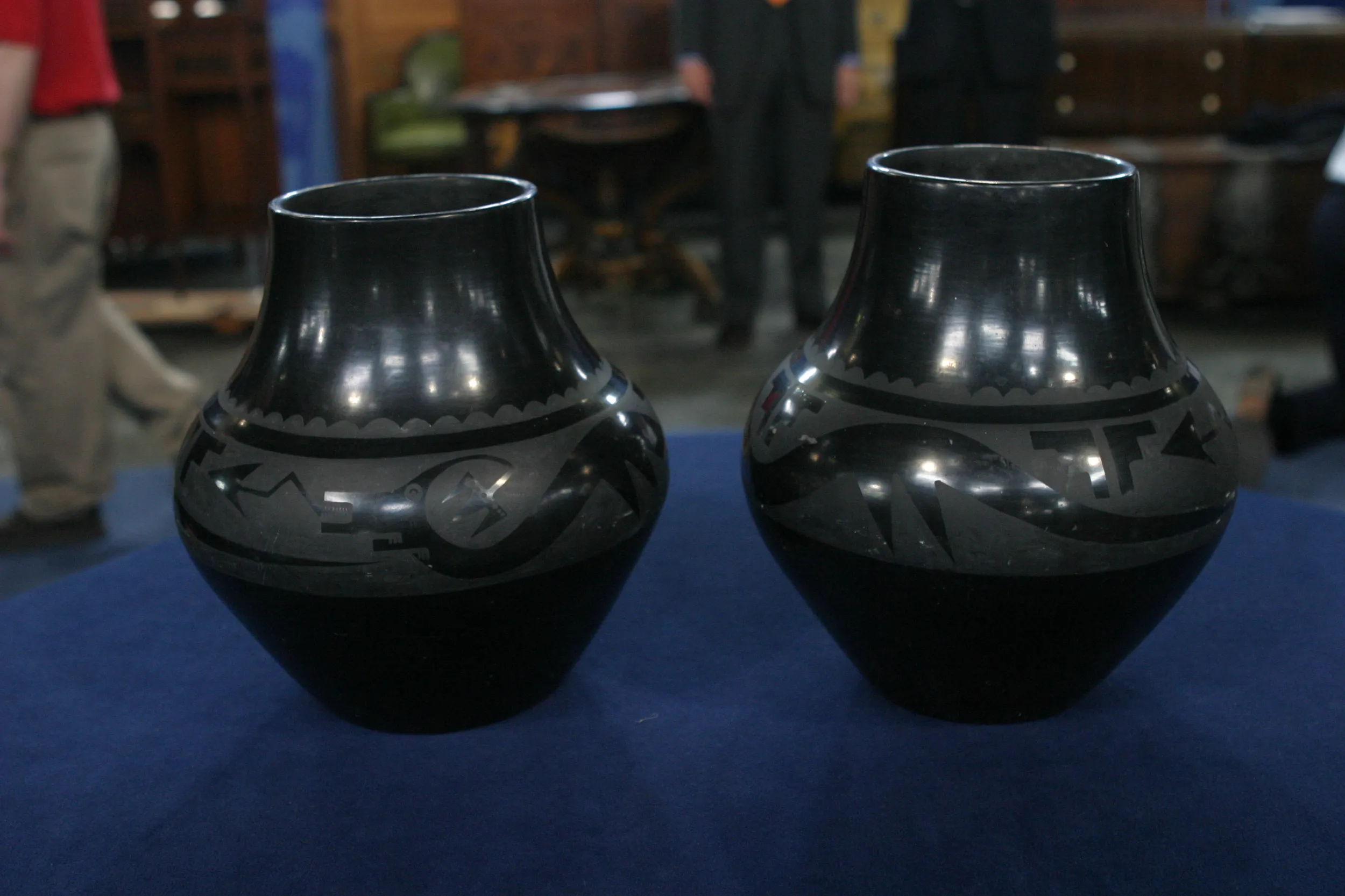GUEST: I inherited these items, and they came down to me from my great-great-grandfather, Colonel Charles Erskine Scott Wood. He spent some time in the Sitka area of Alaska in the spring of 1877. He was in the military, and he was sent from Portland, Oregon, up to Sitka as part of a scientific expedition. And he spent a lot of time when he was there with the native people, interviewing them and observing their customs. And I don't know specifically if he was given these, or if he may have bartered something. I was told that they were probably Tlingit, and also that they are from the Chilkat region.
APPRAISER: That's correct.
GUEST: I was told that this is a grease bowl.
APPRAISER: Yes.
GUEST: And that they used the grease as a condiment. And then this is just a spoon, and it's a big one. And I was told it was made out of horn.
APPRAISER: Mountain sheep horn.
GUEST: Mountain sheep, oh.
APPRAISER: Mountain sheep horn. And this would have been a huge mountain sheep.
GUEST: Yeah, I would imagine.
APPRAISER: Very, very large. These would have been considered family heirlooms of the Tlingit people.
GUEST: Oh, wow.
APPRAISER: That's obviously not the shape of an original horn.
GUEST: Yeah, I wondered, is it carved out?
APPRAISER: Boiled until the horn fabric is soft and malleable, and then pressed into a mold, tied down, and left to dry, and then it retains that shape. Right in the middle, there are little cracks, and what we might call staples, although the material is not metallic. It's baleen, from a whale's mouth.
GUEST: Wow.
APPRAISER: And so where it began to split, we see a native repair.
GUEST: That's cool.
APPRAISER: These are clan figures. And these would be protective spirits to help the person, the family, the tribe, with their daily and religious pursuits. These objects are alive in the native consciousness. They are empowered they're spiritual. It's an animistic religion that native peoples practice-- everything has a spirit. This bowl I think is a bit older than the ladle. This may be late 18th century-- 1780, 1790, perhaps up to the 1820s.
GUEST: Wow.
APPRAISER: We see a raven with a human head at the back. This would have been part of some mythology where the raven took a human on a spiritual flight. This bowl would be filled with eulachon oil. And the oil is-- as you mentioned-- it might be seen as a condiment. It was also, I think, eaten in quantity and used for purging and purifying. The mountain sheep horn ladle at auction would sell in the range of about $75,000.
GUEST: Wow!
APPRAISER: It's really special.
GUEST: I didn't expect that.
APPRAISER: This little bowl, it's earlier, the carving is more sublime.
GUEST: Yeah.
APPRAISER: It's as rare as can be. It's a Native American masterpiece.
GUEST: Wow.
APPRAISER: I think at auction this bowl would realize easily in the $175,000 to $225,000 range.
GUEST: Wow, my goodness.
APPRAISER: They're spectacular.
GUEST: As the raven would say.
APPRAISER: The tongue is important on this little fellow. There is spiritual significance coming out of the bird, empowering those who use the bowl.
GUEST: Wow.
APPRAISER: So the tongue is a very important element.
GUEST: Thank you so much.

